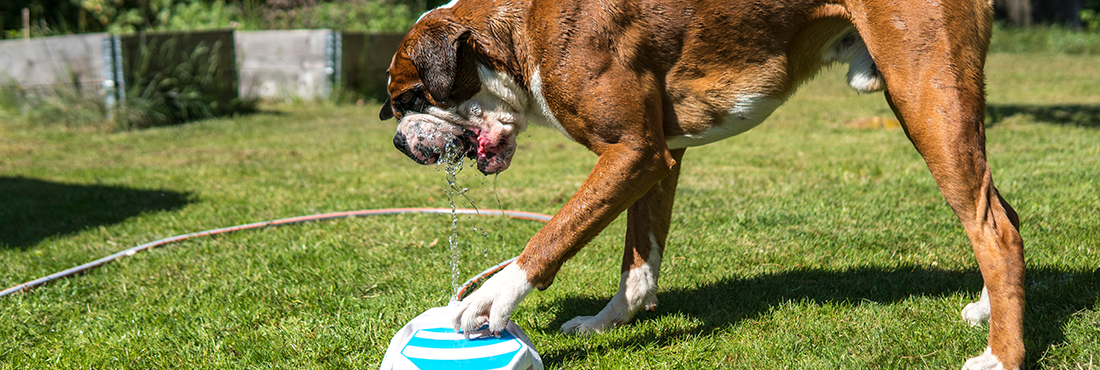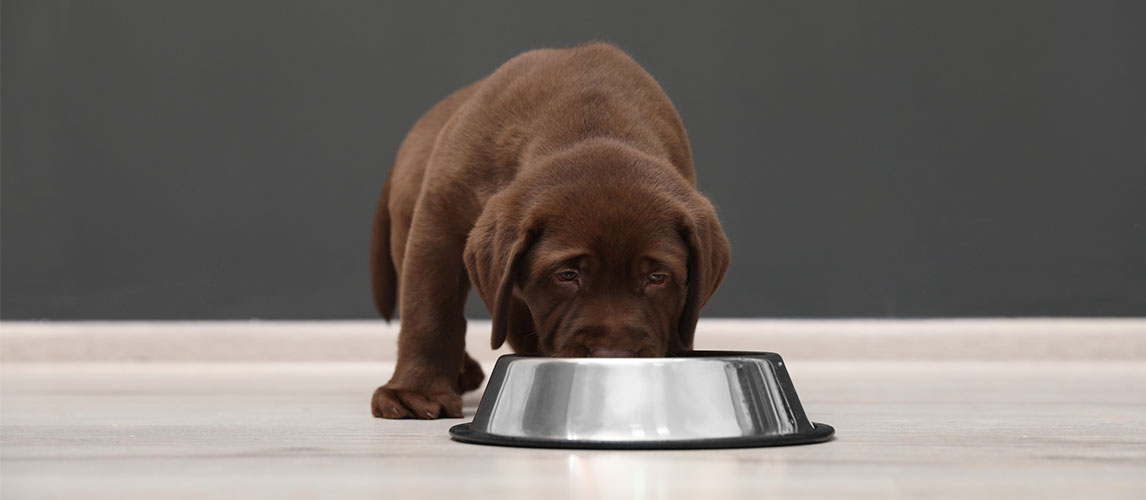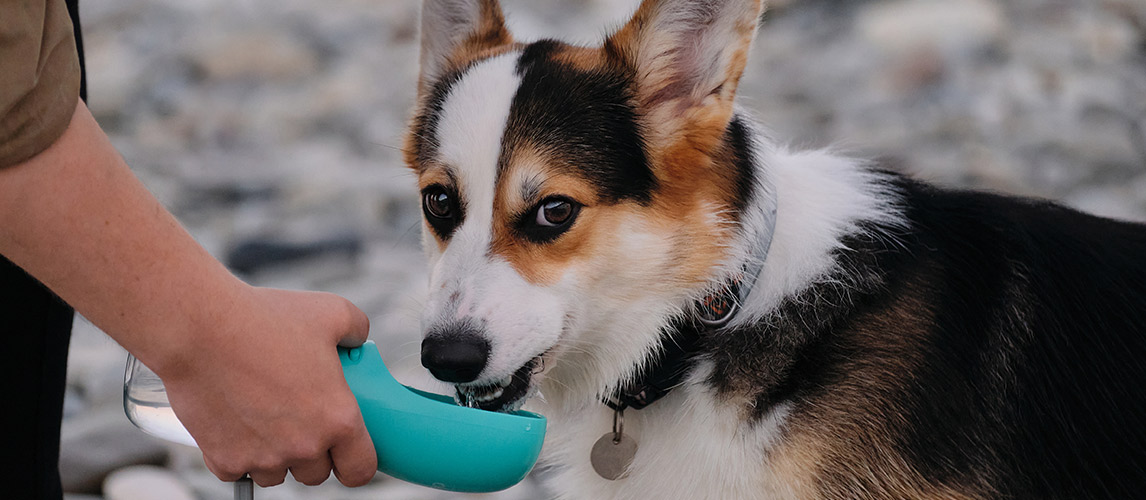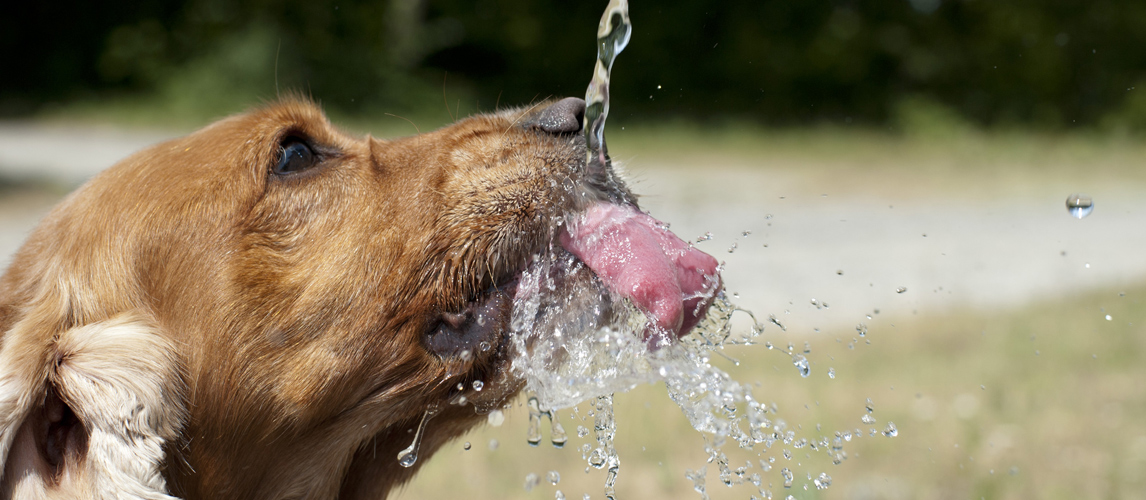Sometimes when a dog won’t drink water there are quick and simple solutions that will have them hydrated in no time. Other times it’s not that straightforward as identifying the reasons why a dog won’t drink can take some time. Here, we aim to narrow down the most and least common reasons why a dog may stop drinking and what you can do to ensure they don’t become at risk of dehydration and remain healthy. Read on to find out more.
How Much Water Dogs Need To Drink
It’s not necessary to physically measure how much water to give to your dog each day unless you are specifically requested to do so by your veterinarian. Since your pup can’t tell you when they are thirsty it’s important that they have access to fresh, clean water at all times. However, as a dog owner, you must observe your dog ensure that they’re getting enough water to stay healthy and hydrated.
Generally, an adult dog needs to drink about one ounce of water per pound of their body weight. This should be their daily intake however it’s worth noting that puppies will need to drink more depending on their size, activity levels, and age.
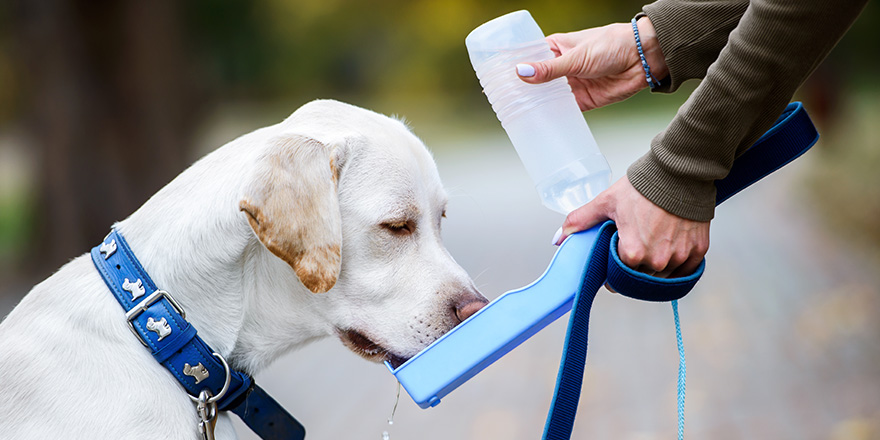
Reasons Why Dogs Won’t Drink Water
There are a few reasons why your dog may reduce his water intake. Some of these are simple reasons and may be easy to resolve however others may need the assistance and care of a professional. You know your pooch better than anyone so narrowing down the culprit shouldn’t be difficult however if you’re still having trouble, you should always consult your vet.
Aging
Like humans, as dogs get older they may not feel the urge to drink a lot of water nor have a big appetite due to the decreased energy levels. Also, depending on their physical state, they may not go to quench thirst as getting up to find their water bowl may be too much effort. Regardless of their lack of thirst, it is still important to make sure they stay hydrated so it may be necessary to move them onto wet food.
Weather Change
Dogs will be more likely to drink water during the warmer months due to an increase in temperature. Although a dog has sweat glands in its paws it’s not enough to keep them cool as the release of heat will be slow so it’s vital to provide them with fresh water to ensure you don’t get a sick pup. Water not only aids digestion, bowel movements, and overall body functions but also helps to regulate their body temperature.
Unfamiliar Surroundings
Going to new places can often be exciting to some dogs however others may find the experience off-putting. Since dogs have a powerful sense of smell they may not drink water given to them because the smell is unfamiliar. The fact that it doesn’t smell like the water they’re used to can prevent them from drinking.
Lack of Physical Exercise
After a long walk, run, or play session you’ll usually find your dog running back inside to take a long drink of water. Although, if your dog is not getting as much exercise as it used to it’s completely normal for them to not drink as much water.
Past Negative Experiences
If your dog has had a few bad experiences in the past when eating or drinking it can create long-term negative feelings about taking the time to relax and gulp down some freshwater. As an example, this can sometimes happen when their paws or tails have been stepped on. Curious and mischievous toddlers or children can often disrupt dogs drinking or eating which can leave them feeling cautious.
This may also be a common issue in rescues so it’s important to keep an eye on your dog’s water intake and their eating habits to ensure you can make them comfortable.
Health Problems
Dog owners will often have a hard time getting their dogs to drink the water due to health issues. Urinary tract infections, diabetes, kidney disease, and even bladder infections may be the reason why your dog isn’t thirsty. If you notice additional symptoms and you suspect a health issue might be behind why your dog won’t drink, talk to your vet immediately.
Oral Problems
Sometimes drinking could cause pain or discomfort to your dog’s mouth due to an injury or dental issue. If your dog has a chipped tooth or wound in the mouth, tongue, or gum the sensitivity of it could mean that your dog will avoid drinking and eating.
How To Tell If Your Dog Is Dehydrated
When your dog won’t drink water or their intake is significantly low, it could lead to dehydration which can be a serious problem. Symptoms of dehydration in dogs can be found below:
- Loss of appetite
- Vomiting
- Diarrhea
- Lethargy
- Frequent panting
- Thick saliva
- Dry nose
- Dry or sunken eyes
Check Elasticity And Gums
You can also check the elasticity of your dog’s skin to check if they are hydrated or not. Loss of elasticity can be checked by gently pinching the skin then letting go. If your dog is hydrated the skin will quickly go back to its original position. In addition to this, you can also feel your dog’s gums. Sticky and dry gums will be a clear sign of dehydration.
Dehydration can be as dangerous to dogs as it can be in humans so it’s important to get them seen by a vet as soon as possible.
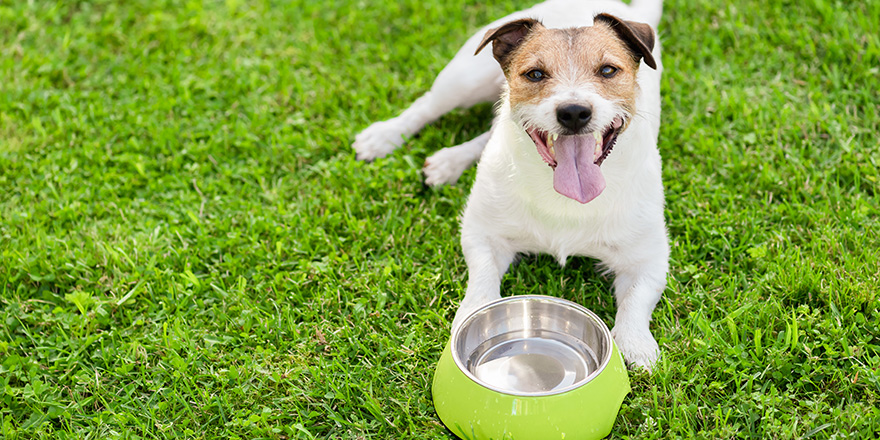
How To Hydrate A Dog That Won’t Drink
Keeping your dog hydrated when they’re not drinking as much can be a difficult task. Fortunately, there are plenty of things you can do to encourage them to drink.
Change Their Water Bowl
Sometimes a dog won’t drink water because they don’t approve of their bowl. Water bowls come in a variety of materials and sizes so you may find that the issue is simply with the bowl itself.
Get More Water Bowls
The constant presence of fresh, clean water can encourage most dogs to drink. Placing water bowls in different rooms may also remind older dogs to take a drink as they move into another space.
Make Sure Their Water Bowl Is Clean
It’s especially important to ensure your dog’s water bowl is clean. Clean their bowls daily to prevent the build-up of bacteria. If you have multiple water bowls make sure you remember to clean them all and replace the water daily.
Water Bowl Placement
If the reason your furry friend won’t drink is that they experience negative feelings, try placing their water bowl elsewhere. If you offer them a quiet space to eat and drink they are likely to feel more comfortable and will quench their thirst.
Wet Food
If your dog currently eats dry dog food it may be worth looking for an alternative to help hydrate them and provide them with additional liquid. Switching to wet canned dog food or adding a food topper will help due to their high moisture content. An older dog may benefit from a wet diet as opposed to dry kibble as they may not drink as much but will still require a decent intake of water.
Some owners believe that crunchy kibble has more than just nutritional benefits as they can clean the teeth however wet food can still provide the same value whilst hydrating them.
Broth
Adding a teaspoon of chicken or beef broth to their water might encourage them to drink more. Dog owners can also use these broths to make ice cubes that will eventually disperse the flavor into the water as they melt. This particular method is effective when encouraging a sick dog to drink.
Change Their Water
Filtered, bottled, distilled, and tap water will have a different taste so if you’ve been giving your pet one of these, try changing it to another instead.
Get Them A Water Fountain
Moving water can often encourage dogs to drink as they can sometimes turn their nose up at bowls that have been sitting for a while. If this is something you are considering, take a look at our handy guide on dog water fountains.
Buy A Travel Water Bowl
To prevent dehydration, owners should encourage their dogs to drink water when out and about. Take a cool dog water bottle and a travel bowl for your dog on walks and days out.
Keep Them Cool
In warmer weather, your dog may take to drinking water regularly, however, you’ll need to ensure that you keep them cool as the high temperature will mean they will lose water quicker. Owners can do a few things to keep their pet cool during the summer including getting a cooling vest or doggie pool, making frozen treats, adding ice cubes to their water, keeping them in the shade when outside, etc.
If you need more tips on how to keep your pet cool, take a look at our guide available here.
Can Dogs Drink Milk If They Won’t Drink Water?
Older dogs will lack the enzyme needed to break down lactose which can often lead to lactose intolerance in canines. Although many dogs can tolerate lactose, it’s not recommended that you give your dog milk if they are not drinking water regularly.
Signs Of Lactose Intolerance:
- Flatulence
- Diarrhea/loose stools
- Itchy/red skin
- Stomach aches
- Bloating
Related Article: Can Dogs Drink Milk?
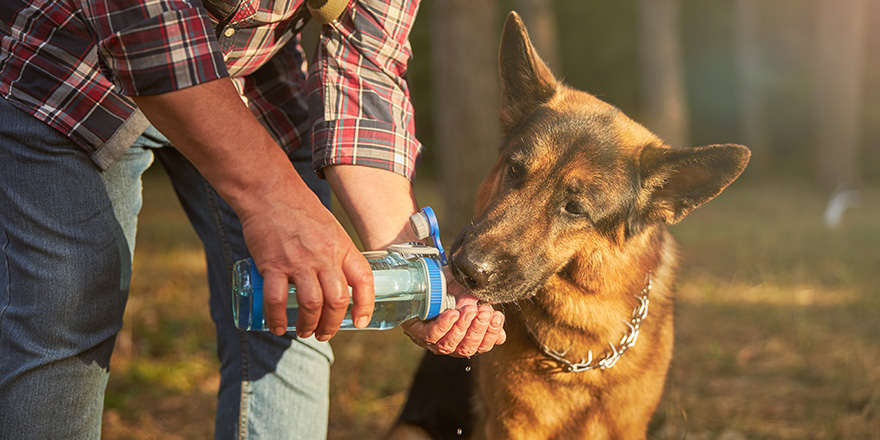
Summary – How To Make My Dog Drink Water
As we mentioned previously, as a general rule, dogs need around one ounce of water per pound of body weight. To get your dog drinking water there are a few useful options to consider however you must ensure that you take into account their current situation.
If the weather is warm or if your pet dislikes their water bowls there are many simple solutions. Although, if you find your dog is experiencing other concerning symptoms and odd behavior they could be struggling with a health issue. In any case, if you’re perturbed, always consult your vet and keep a close eye on their water consumption.


